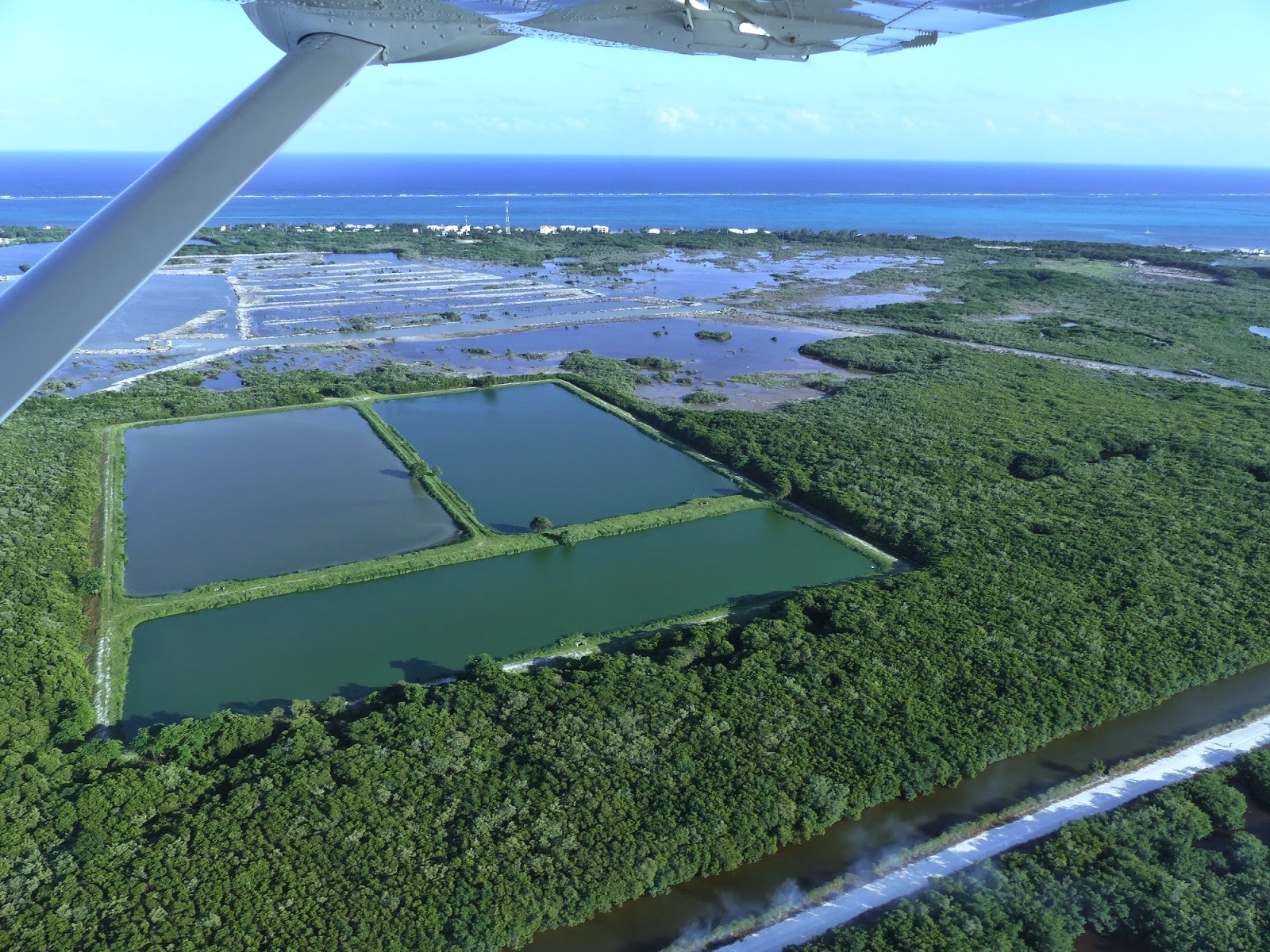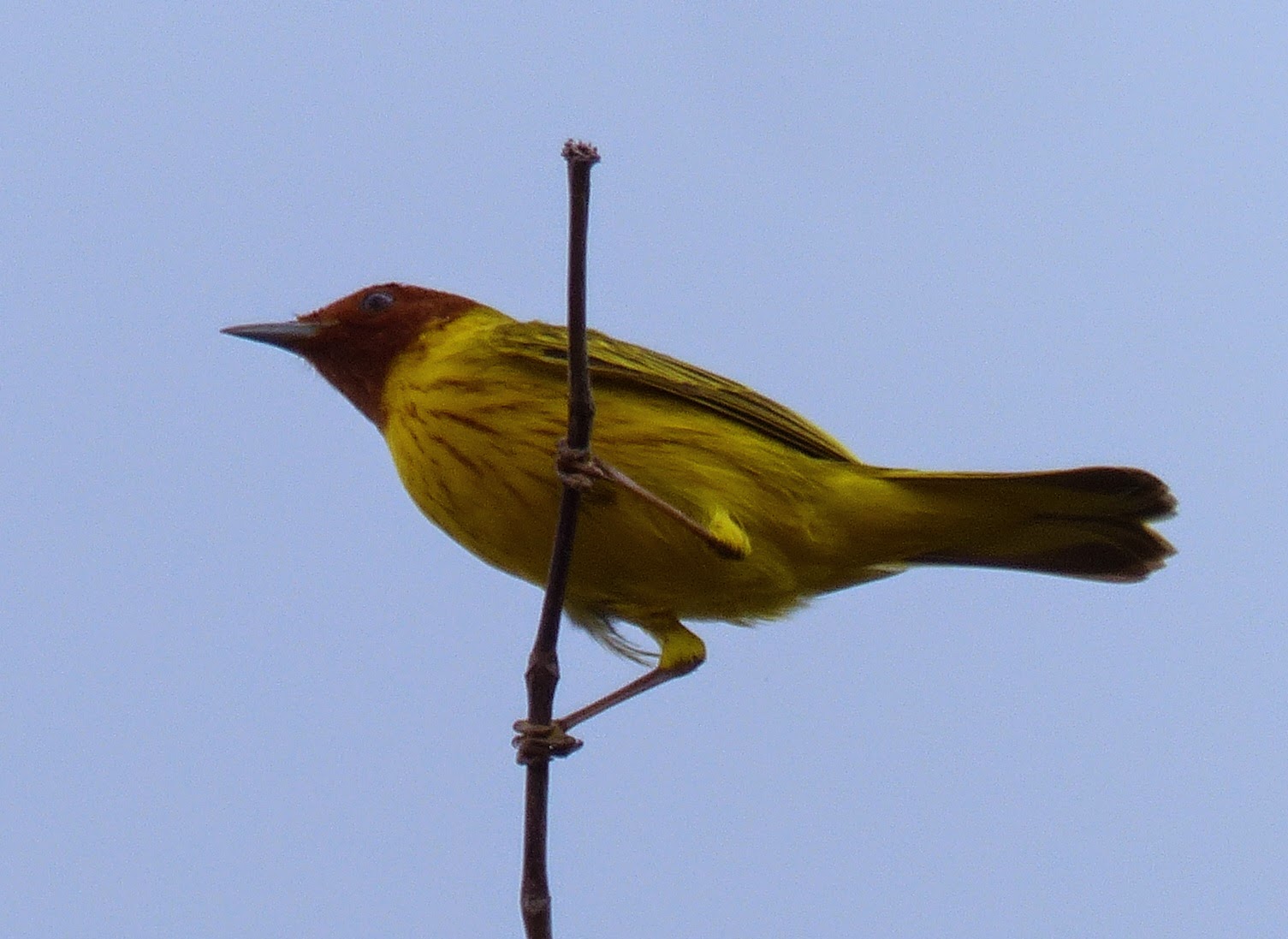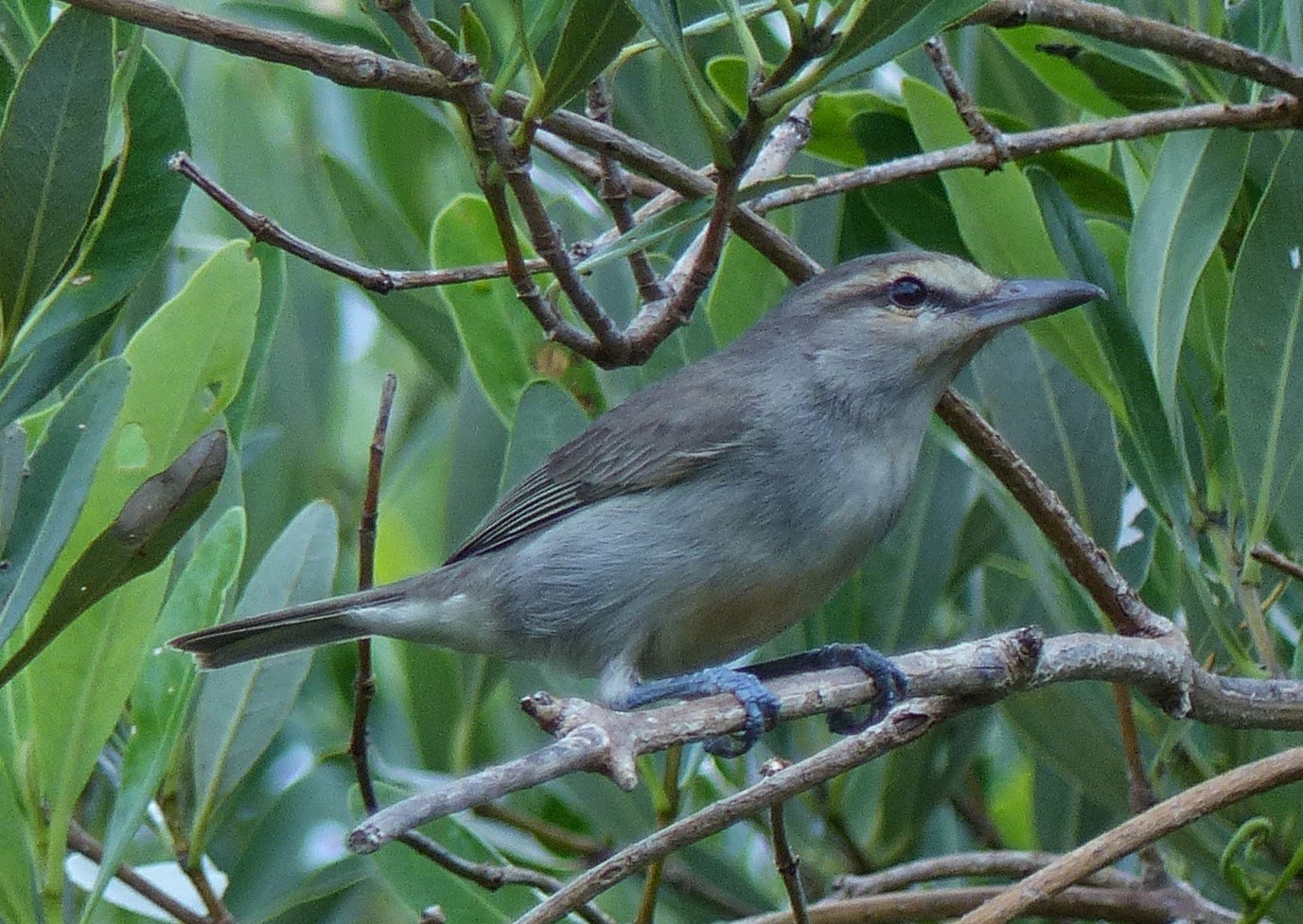Another spring, another exciting trip
to one of my favourite wildlife destinations: Belize. February is the
usual slot for my annual birding trip for Tucson-based
Borderland Tours. All
thoughts of winter, the effects of an overnight bus and two days of
travel, the dehumanisation of the absurd Miami Airport “Homeland
Security” regime are instantly banished as you board the Tropic Air
Caravan flight to San Pedro. And after fifteen minutes over the
Caribbean, you are on Ambergris. Even though it has changed beyond
recognition in recent years, the island retains the atmosphere of a
place to relax. Of course, co-leader Moez and I are not here to
relax: we're here to work. Throwing our bags into our rooms, we want
to take advantage of the last hour of light by hurrying to the
nearest available habitat: the desalination plant. Here we find our
first Black Catbird
Melanoptila glabrirostris as Mangrove
Warblers
Setophaga petechia sing their evening melodies. A
Clapper Rail
Rallus crepitans bellows and a dozen Lesser
Nighthawks
Chordeiles acutipennis emerge from the mangroves.
The birds tell us that we can only be in the Yucatán.
 |
| Mangroves S of San Pedro, with a newly cleared plot. |
Next morning we await our pre-dawn taxi
to scout potential new birding areas. The dry forest and mangroves have been rapidly cleared south of San Pedro to construct holiday homes, so we are looking for new areas further north. Unusually, our driver does not
show up. Still, this is Sunday morning and yesterday night the town
celebrated St. Valentine's Day. We take the opportunity to swallow
breakfast, then flag down a taxi to “the cut”, where we cross the
new Sir Barry Bowen Bridge to the northern part of the island. The
habitat is in much better shape here and we quickly find Yucatán
endemic Orange Oriole
Icterus auratus as well as Plain
Chachalaca
Ortalis vetula. As the sun burns hotter, we enquire
where to rent some form of transport and some friendly hotel guards
offer us their bicycles – the perfect way to bird. As we pedal
northwards we hear Yucatán Woodpecker
Melanerpes pygmaeus and
Yucatán Flycatcher
Myiarchus yucatanensis and stop to admire
a Yucatán Vireo
Vireo magister, dapper Mangrove Warblers and a pair of Black-cowled
Orioles
Icterus prosthemelas. We have already racked up at
east 30 Black Catbirds. Bananaquits
Coereba flaveola are
typically scarce on our Belize itinerary, but we find nearly a dozen
here, all of the distinctive Yucatán island subspecies
caboti.
We have not found Caribbean Dove
Leptotila jamaicensis or
Caribbean Elaenia
Elaenia martinica, species which have all
but disappeared south of San Pedro, but they undoubtedly persist
here. On a side road to the west across coastal lagoons the
beautifully intact mangroves deserve our attention, but we are out of
time. Eight Stilt Sandpipers
Calidris himantopus feed with the
water up to the top of their legs as an immature Hook-billed Kite
Chondrohierax uncinatus cruises past – we had already seen a
soaring female. This area looks perfect for White-crowned Pigeon
Patagioenas leucocephala, although we are perhaps a little
early in the year. It is time to return to the hotel to set up
logistics and meet the group.
 |
| ♂ Mangrove
Warbler Setophaga petechia |
Next morning we're out at first light
and ready to show the group the best of the island: the San Pedro
Municipal Dump. We know just what our tour participants want to see.
As we walk through the adjoining cemetery, the smouldering refuse and
abundance of flies look promising. This is insectivore heaven and
soon we have seen dozens of migrant warblers and at least 20 Black
Catbirds. A Scissor-tailed Flycatcher
Tyrannus forficatus is unusual, but the 60 White
Ibis
Eudocimus albus are staple dump birds, their immaculate white plumage and
ink-dipped wing-tips contrasting with their surroundings. A Yucatán
Woodpecker announces its presence only a few metres from us, as do
Yellow-billed Caciques
Amblycercus holosericeus. As we wander
back, we have great views of perched male and female Double-toothed
Kites
Harpagus bidentatus. A lone drake Lesser Scaup
Aythya affinis – unusual on the cayes – is the only bird on the water, but a huge American Crocodile
Crocodylus acutus has hauled itself out on the sand.
In the afternoon we take a snorkelling
trip to the Hol Chan Marine Reserve where we get to swim with Green
Moray Eels
Gymnothorax funebris, Nurse Sharks
Ginglymostoma
cirratum and Southern
Stingrays
Dasyatis americana. We drift over a couple of
full-grown Green Turtles
Chelonia mydas, close enough to touch
as they graze placidly on the seagrass. It can't match the dump for
birding, but has its charms.
The next morning we have time to study
a couple of Yucatán Vireos before jumping on the flight back to the
mainland.
%2Bedit.JPG) |
| Yucatán Vireo Vireo magister |